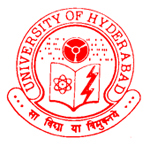PD Dr. Niyaz AhmedUniversity of Hyderabad Department of Biotechnology and Bioinformatics |
 |
|
| Email: Net: |
ahmed.nizi@gmail.com http://www.isogem.org/niyaz.html |
|
Our group is currently working on functional characterization of some of the novel H. pylori proteins that are putatively linked to antigenicity [Ahzm2] and survival mechanisms at the base of chronic gastritis – a precancerous sequel of H. pylori infection [Ahm1,7]. More specifically, the proinflam-matory and proapoptotic roles of the plasticity region encoded proteins were explored in relation to their being part of putative survival mechanisms that the organism harnesses to form a persistent niche. We continue with the efforts to understand various underlying pathways pertaining to proin-flammatory and apoptotic signaling of the HP986 protein, and further characterized its interaction with TNFR1 and Fas. To rule out signaling through TLR2 and TLR4, specific antibodies directed against TLRs were used to block any possible interaction of HP986 with the TLRs. We observed no contribution of TLR induced signaling to our observed pro-inflammatory and pro-apoptotic effects which were indeed triggered through the TNFR1 mediated pathway. These observations are being verified by siRNA mediated silencing of various competing receptors. Computational modeling, docking simulation studies, and real-time interaction analysis through SPR were carried out to verify molecular interactions related to the interaction of HP986 with TNFR1.
Our earlier analysis showed significantly high antibody titers against HP986 in H. pylori infected patients when compared with the healthy control. As there were no sequence and structural homologues for HP986 found in other bacterial organisms, it clearly indicates the HP986 to be a highly specific and sensitive antigen. This also raises the possibility that protein could be presented to the immune system through surface localization or secreted outside through type IV secretion system or autolysis. However, the exact mechanism of HP986 protein transport from H. pylori is still to be explored and is the subject of our future study also. Furthermore, the role of some of the polysaccharides which interact with outer membrane protein of H. pylori and thus interfere with bacterial adhesion to the host mucous membrane are also a crucial component of our interests.
We are currently collaborating with Hensel exploring the role of a novel virulence factor, HP986, from H. pylori in pathogenesis. This study will be corroborated with the H. pylori adhesion inhibitory role of acidic glycans to host cells (col. Hensel) including interaction analysis with GSLs of human gastric epithelial cell lines in collaboration with Müthing and Mormann (TLC overlay assays and real-time SAW measurements).



